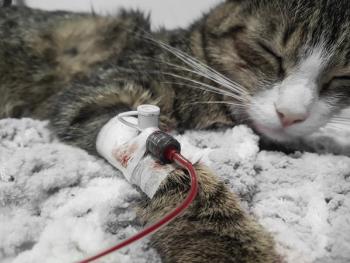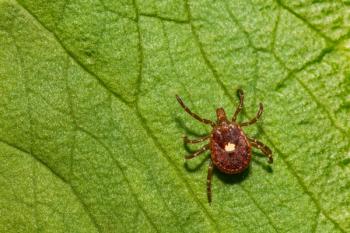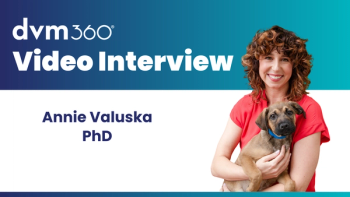
- dvm360 May 2020
- Volume 51
- Issue 5
Bites, scratches and beyond: Getting hurt is not in your job description
Among the many adjectives that might describe working in a veterinary practice, ‘dangerous’ is likely not among the first that come to mind. But maybe it should be.
It would be difficult to find a veterinary professional who can’t share an anecdote about sustaining a minor workplace injury. When your patients are sick, anxious or unaware of their strength, it can be difficult to predict what they might do.
According to a 2016 report, veterinarians have one of the
While you may consider an occasional bite or scratch “part of the job,” what percentage of injuries are avoidable? Is improper training, a stressful workload or negligence putting your safety at risk?
The most common veterinary workplace injuries
What is the leading cause of injuries in veterinary practice? You guessed it: the patients. A study published in the
Similarly, of the 3,200 annual workers’ compensation claims filed with AVMA PLIT’s primary insurance carrier, about 70% are related to contact with an animal, says Scott Simpson, a risk consultant at HUB International. “It is not surprising to veterinarians that this would be the number one hazard.”
It’s not only aggressive animals that cause injuries, says Erin Spencer, MEd, CVT, VTS (ECC), owner of
Second to insurance claims filed about animal-inflicted injuries are accidents that fall under the category of strains and sprains. Although these types of injuries account for 8% of claims, they comprise 27% of what is paid through workers’ compensation. It’s just as important to consider the severity of an injury as it is the frequency, Simpson explains.
“Maybe someone lifted a heavy dog and pulled their back or they were walking a dog that jerked and the person’s arm was pulled out of its shoulder. These injuries don’t happen as often, but when they do it costs a lot more than a bite or scratch.”
Rounding out the top three most common types of veterinary workplace claims are slip and falls.
It’s also important to consider potential risks that might not be visible to the naked eye. “Some overlooked hazards include exposure to waste anesthetic gases and exotic chemicals such as ethylene oxide,” says Richard Best, PhD, director of Occupational Safety and Health Administration (OSHA) compliance for
In addition to cancer-related links, a 2008 British Medical Journal
A similar
Obtaining X-rays is one of the other areas where Spencer says repeated mistakes are being made. “When you come out of school you have absolutely learned radiation safety, but the implementation is what I see as the problem.” While Spencer believes safety in this area is getting better, she quickly recounts multiple instances from her time as a clinic manager where radiation monitoring badges came back high or a finger appeared in an X-ray.
“They know all the things they are supposed to do, but they had an animal that wasn’t going to lay still unless they leaned in a little closer,” she explains. “I think sometimes people also try to take shortcuts and forget [about the radiation] because you can’t see it.”
Protect yourself, your practice, your patients
Dr. Best notes that there is an increase in work-related injuries within the first two years of working in veterinary practice. Statistics from the National Institute for Occupational Safety and Health also indicate that people under age 25 are nearly twice as likely to be sent to the hospital due to a work-related injury, implying that inexperience may lead to injury.
“For newer professionals, when the injury is a bite or scratch it could be likely that they were not looking for the body language of the patient or didn’t understand the body language well enough,” Spencer suggests. “And that comes with time.”
Simpson also pinpoints the unpredictability of veterinary hospitals as the primary reason for workplace injuries. But learning from trial and error is not a suitable safety strategy.
On a federal level, OSHA has a strict set of regulations designed specifically for the veterinary industry. This includes general safety guidelines—such as having a fire prevention plan—as well as rules specific to chemotherapy, chemical hazards, medication labeling and radiation. Under OSHA’s standards, new employees must be oriented properly on the safety procedures of the hospital and their specific position. It is recommended that employees receive additional training following a work-related injury or when a manager recognizes repeated displays of unsafe behaviors.
There is no denying that hospitals are incredibly busy and filled with unexpected emergencies and distractions, but Simpson stresses the importance of making safety a collaborative effort. For instance, practices might start pairing a novice employee with a more seasoned staff member who can demonstrate how to perform daily responsibilities safely.
Simpson suggests establishing a safety committee comprised of employees from various departments that meets regularly. “This is a great way to start a dialogue and ensure all employees feel they are involved in the process.”
Dr. Best recommends that veterinary hospitals adopt some of the practices that are required in human medicine. This is especially important when there is potential for exposure to bloodborne pathogens, which are not currently regulated in veterinary medicine. “For example, place sharps containers at the site where the sharp is generated or where the injection occurs so that the sharp can be disposed of immediately,” he says. Too often, veterinary staff may be recapping sharps or walking around with them in their pockets. “The sooner you get rid of it, the sooner it is no longer a hazard.”
Easily accessible training tools are available through veterinary insurance providers, AVMA and the Centers for Disease Control and Prevention. These include comprehensive videos and online courses as well as safety checklists and injury reporting tools. IDEXX’s ‘
Spencer also touts the positive effects low-stress handling can have on promoting a safer environment. “We still have to educate our newer technicians on realistic limits and what they should expect to have help with. But as far as the thrashing animal, low-stress handling and making their experience a little better is key.” When necessary, she recommends considering sedation for a patient before an examination or treatment.
Ultimately, there is no end to safety training. “No one has time to do all of the training that should be done,” Dr. Best says. “But it is about finding the particular hazards in your work environment and tailoring training to those particular areas.”
Amanda Carrozza is a freelance writer and editor in New Jersey.
Articles in this issue
over 5 years ago
dvm360 launches online CE center amid pandemicover 5 years ago
Man versus horse: Game, set, match!over 5 years ago
Readers write: Acting on student debtover 5 years ago
Pet health insurance respiratory claims remain flatover 5 years ago
No place for Caesars in veterinary medicineover 5 years ago
The financial consequences of COVID-19 for veterinariansover 5 years ago
COVID-19 test for pets now available to veterinariansover 5 years ago
Coping with the COVID-19 quarantineNewsletter
From exam room tips to practice management insights, get trusted veterinary news delivered straight to your inbox—subscribe to dvm360.




